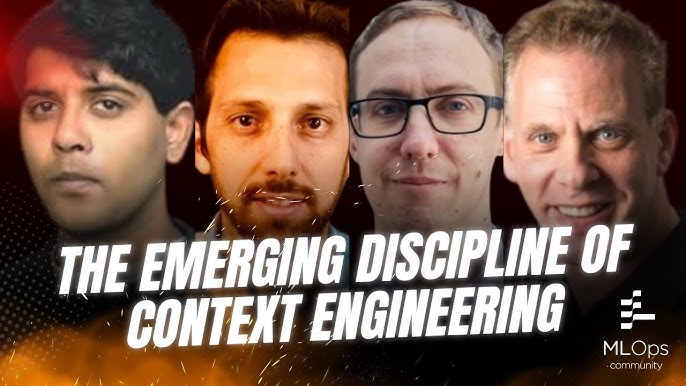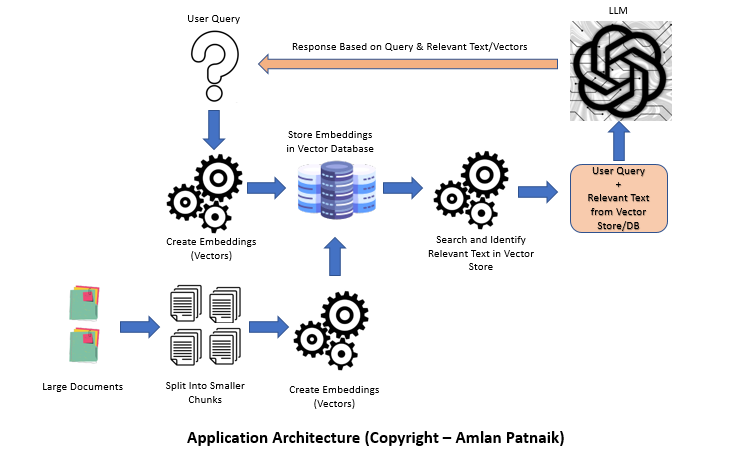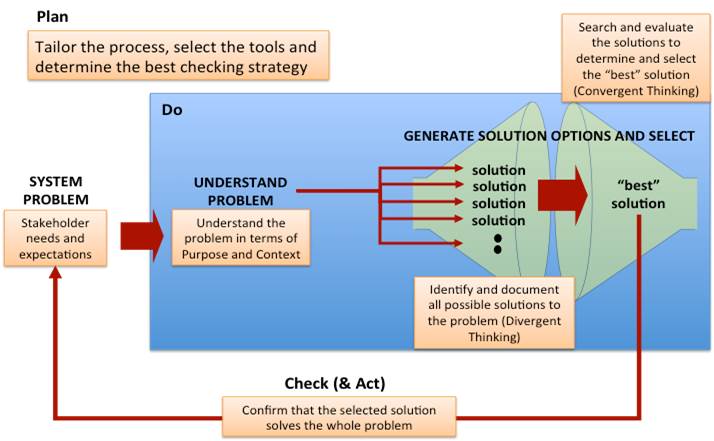
Beyond RAG: Why Context Engineering is the Future of LLM Applications
The advent of Large Language Models (LLMs) has been nothing short of revolutionary, but their out-of-the-box knowledge is limited to their training data. This led to the rapid rise of Retrieval-Augmented Generation (RAG), a powerful technique for grounding LLMs in external, up-to-date information. RAG has become the go-to architecture for building chatbots, Q&A systems, and research assistants that can converse about private or recent data. By retrieving relevant documents and feeding them to the LLM as context, RAG systems dramatically reduce hallucinations and increase factual accuracy.
However, as developers move from simple proofs-of-concept to robust, production-grade applications, the limitations of “naive” RAG are becoming increasingly apparent. Simply retrieving a few chunks of text and stuffing them into a prompt often leads to suboptimal, irrelevant, or even confusing answers. The next frontier in building sophisticated AI applications isn’t just about better models or bigger vector databases; it’s about a more deliberate and holistic approach known as Context Engineering. This discipline treats the context provided to an LLM not as a simple retrieval result, but as a carefully crafted product of a multi-stage pipeline designed for maximum relevance and coherence.
The Evolution from Simple Retrieval to Sophisticated Context
To understand Context Engineering, we must first appreciate the foundation upon which it’s built: RAG. A basic RAG pipeline is a two-step process that has become a cornerstone of modern AI development, with frameworks like LangChain and LlamaIndex abstracting much of its complexity.
Understanding the Foundations: A Classic RAG Pipeline
At its core, a RAG system performs two primary functions:
- Retrieval: Given a user query, the system searches a knowledge base (typically a vector database like Chroma, Pinecone, or Milvus) to find the most relevant pieces of information. This process involves document loading, text chunking, and creating vector embeddings using models from sources like Hugging Face’s Sentence Transformers.
- Generation: The retrieved information (the “context”) is combined with the original user query into a new, augmented prompt. This prompt is then sent to an LLM (like those from OpenAI, Anthropic, or Mistral AI) to generate a final, context-aware answer.
A simple implementation using popular libraries demonstrates this flow. Here’s a conceptual example using Python to illustrate the basic mechanics.
# 1. Setup: Install necessary libraries
# pip install langchain langchain_openai chromadb sentence-transformers
import os
from langchain_community.document_loaders import TextLoader
from langchain_community.vectorstores import Chroma
from langchain_openai import OpenAIEmbeddings, OpenAI
from langchain.text_splitter import CharacterTextSplitter
from langchain.chains import RetrievalQA
# --- Assume OpenAI API key is set as an environment variable ---
# os.environ["OPENAI_API_KEY"] = "YOUR_API_KEY"
# 2. Load and Process Documents
# Create a dummy document for our knowledge base
with open("my_knowledge_base.txt", "w") as f:
f.write("The first generative AI model was created in the 1960s.\n")
f.write("PyTorch is a popular deep learning framework developed by Meta AI.\n")
f.write("TensorFlow was developed by the Google Brain team.\n")
f.write("JAX is a high-performance machine learning framework from Google DeepMind.\n")
loader = TextLoader('./my_knowledge_base.txt')
documents = loader.load()
# Split documents into smaller chunks
text_splitter = CharacterTextSplitter(chunk_size=500, chunk_overlap=50)
texts = text_splitter.split_documents(documents)
# 3. Create Vector Store for Retrieval
# Using OpenAI for embeddings and Chroma as the vector store
embeddings = OpenAIEmbeddings()
# Recent Chroma News indicates it's a popular choice for local development
vector_store = Chroma.from_documents(texts, embeddings)
retriever = vector_store.as_retriever()
# 4. Create the RAG Chain
# This chain combines retrieval and generation
qa_chain = RetrievalQA.from_chain_type(
llm=OpenAI(),
chain_type="stuff",
retriever=retriever
)
# 5. Ask a Question
query = "Who developed PyTorch?"
response = qa_chain.invoke(query)
print(response['result'])
# Expected Output: PyTorch is a popular deep learning framework developed by Meta AI.This standard approach works well for simple questions but fails when faced with ambiguity, complexity, or the need to synthesize information from disparate sources. This is where Context Engineering begins.
Core Techniques in Context Engineering
Context Engineering reframes the problem from “How do I find relevant documents?” to “How do I construct the perfect context to answer the user’s true intent?”. This involves adding sophisticated layers before, during, and after the retrieval step.

Query Transformation: Helping the Retriever Succeed
Users often ask vague or poorly phrased questions. A naive RAG system will take this query at face value, leading to poor retrieval results. Query transformation techniques refine the user’s input into something more potent for the retrieval system.
- Hypothetical Document Embeddings (HyDE): The LLM generates a hypothetical, ideal answer to the user’s query first. The embedding of this *hypothetical answer* is then used for the similarity search, which often matches the actual document content more closely than the original question.
- Multi-Query Generation: The LLM generates several variations of the user’s query from different perspectives. The system then retrieves documents for all variations, creating a richer, more diverse set of initial results.
Here’s how you could implement multi-query generation:
# Building on the previous example
from langchain.prompts import PromptTemplate
from langchain_core.output_parsers import StrOutputParser
from langchain_openai import ChatOpenAI
# 1. Define a prompt template for generating query variations
template = """You are an AI language model assistant. Your task is to generate 3
different versions of the given user question to retrieve relevant documents from a vector
database. By generating multiple perspectives on the user question, your goal is to help
the user overcome some of the limitations of distance-based similarity search.
Provide these alternative questions separated by newlines.
Original question: {question}"""
prompt_perspectives = PromptTemplate(
input_variables=["question"],
template=template,
)
# 2. Create a chain to generate the queries
llm = ChatOpenAI(temperature=0)
generate_queries_chain = (
prompt_perspectives
| llm
| StrOutputParser()
| (lambda x: x.split("\n"))
)
# 3. Run the chain with an example question
original_query = "What are the differences between TensorFlow and PyTorch?"
generated_queries = generate_queries_chain.invoke({"question": original_query})
print("--- Generated Queries ---")
for q in generated_queries:
print(q)
# You would then run your retriever for the original query + all generated queries
# and merge the results. This is a core part of what LlamaIndex and LangChain excel at.Advanced Retrieval and Re-Ranking
After transforming the query, the next step is to improve the retrieval and filtering process itself. A simple vector search is often not enough.
- Hybrid Search: This combines the semantic understanding of vector search with the precision of keyword-based search (like BM25). This is highly effective for queries containing specific jargon, product codes, or names that semantic search might miss.
- Re-Ranking: The initial retrieval might return, say, the top 20 documents. A re-ranking model, often a more powerful but slower cross-encoder, then re-evaluates these 20 documents against the query to produce a much more accurate final ordering. This ensures the most relevant information appears at the top of the context, mitigating the “lost in the middle” problem where LLMs ignore information buried in a large context. News from providers like Cohere often highlights their powerful re-ranking endpoints available via API.
Building Sophisticated Context Pipelines
True Context Engineering involves building dynamic, multi-stage pipelines that can handle complex information needs. This is where we move from a linear RAG flow to a graph-like, conditional process managed by frameworks that are constantly evolving, as seen in recent LangChain News and LlamaIndex News.
Multi-Source and Structured Data Integration
Knowledge isn’t just in text files. It resides in SQL databases, graph databases, CSV files, and behind APIs. A sophisticated system should be able to route a query to the appropriate data source. For example, a query like “What were our top-selling products in Q2 and what is the latest customer feedback on them?” requires querying a SQL database for sales data and a vector database for customer reviews. This routing logic can itself be powered by an LLM, which acts as a “natural language to API” layer.
Context Compression and Summarization

LLMs have a finite context window. Simply concatenating all retrieved documents is inefficient and often counterproductive. Context Engineering applies intelligent compression techniques:
- Summarization: An intermediate LLM call can summarize long retrieved documents before they are passed to the final generation model.
- Selective Extraction: Instead of passing the whole document, the system can extract only the specific sentences or facts that directly answer the user’s query.
Let’s look at a practical example of a re-ranking step using the `sentence-transformers` library, which is a staple in the Hugging Face News ecosystem.
# pip install sentence-transformers
from sentence_transformers.cross_encoder import CrossEncoder
# 1. Initialize a Cross-Encoder model
# These models are trained to predict the similarity between a query and a document.
# They are more accurate but slower than bi-encoders used for initial retrieval.
model = CrossEncoder('cross-encoder/ms-marco-MiniLM-L-6-v2')
# 2. Define the query and a list of initially retrieved documents
query = "Who developed the PyTorch framework?"
documents = [
"The first generative AI model was created in the 1960s.",
"TensorFlow was developed by the Google Brain team and is used widely in production.",
"PyTorch is a popular open-source deep learning framework primarily developed by Meta AI's research lab.",
"JAX is a high-performance numerical computing library from Google DeepMind.",
"Hugging Face provides a vast library of pre-trained models, including many based on PyTorch and TensorFlow."
]
# 3. Create pairs of (query, document) for scoring
sentence_pairs = [[query, doc] for doc in documents]
# 4. Predict scores
scores = model.predict(sentence_pairs)
# 5. Combine documents with scores and sort them
scored_docs = list(zip(scores, documents))
scored_docs.sort(key=lambda x: x[0], reverse=True)
# 6. Display the re-ranked documents
print("--- Re-ranked Documents ---")
for score, doc in scored_docs:
print(f"Score: {score:.4f} - Document: {doc}")
# The top result will now be the most relevant document, which you can
# confidently place at the beginning of your final prompt context.Best Practices, Evaluation, and Optimization
Building a complex context pipeline is only half the battle. To create a truly effective system, you must be able to measure, monitor, and optimize it. This is where MLOps principles, supported by tools like MLflow News and Weights & Biases News, become critical for generative AI.
The Critical Role of Evaluation
You cannot improve what you cannot measure. For RAG and Context Engineering systems, evaluation goes beyond simple accuracy. Frameworks like RAGAs and TruLens provide metrics to assess the quality of each component:

- Context Precision & Recall: Is the retrieved context actually relevant? Did you miss any important information?
- Faithfulness: Does the generated answer stick to the facts provided in the context, or is it hallucinating?
- Answer Relevance: Does the final answer directly address the user’s query?
Integrating an evaluation framework into your development loop is non-negotiable for production systems. Platforms like LangSmith News are gaining traction by providing the deep observability needed to debug these complex, multi-step chains.
# A conceptual example of using an evaluation framework like RAGAs
# pip install ragas datasets
# This is a simplified example. In a real scenario, you'd have a dataset
# of questions, ground truth answers, and the context your system retrieved.
from datasets import Dataset
from ragas import evaluate
from ragas.metrics import faithfulness, answer_relevancy, context_recall, context_precision
# 1. Prepare your evaluation data
# This data would be the logged inputs/outputs from your RAG system
data_samples = {
'question': [
'Who developed PyTorch?',
'What is JAX?'
],
'answer': [
'PyTorch was developed by Meta AI.',
'JAX is a framework from Google.'
],
'contexts': [
['PyTorch is an open-source ML library from Meta AI.', 'TensorFlow is from Google.'],
['JAX is a high-performance ML framework from Google DeepMind.']
],
'ground_truth': [
'The PyTorch framework was primarily developed by the research lab at Meta AI.',
'JAX is a machine learning framework for high-performance numerical computing developed by Google DeepMind.'
]
}
dataset = Dataset.from_dict(data_samples)
# 2. Run the evaluation
# This calculates the key metrics for your RAG pipeline's performance
result = evaluate(
dataset=dataset,
metrics=[
context_precision,
context_recall,
faithfulness,
answer_relevancy,
],
)
# 3. View the results
print(result)
# This dictionary contains the scores that help you pinpoint weaknesses in your pipeline.
# A low context_precision means your retriever is fetching irrelevant docs.
# A low faithfulness means your LLM is hallucinating despite the context.Performance and Cost Optimization
Every LLM call and embedding model inference costs time and money. Optimization is key. This includes choosing the right tools, from high-performance vector databases covered in Qdrant News to optimized inference servers. The latest NVIDIA AI News often focuses on hardware and software like TensorRT and Triton Inference Server, which can dramatically speed up model serving. For software-level optimization, frameworks like vLLM News are changing the game for LLM inference throughput. Furthermore, deploying and managing these complex systems at scale often involves platforms like AWS SageMaker News, Azure Machine Learning News, or Google’s Vertex AI News.
Conclusion: Context is King
The narrative that “RAG is dead” is an oversimplification. Rather, RAG as a simple, naive pattern is evolving. It is the foundational building block for the far more powerful and necessary discipline of Context Engineering. As we build more ambitious AI applications, success will not be determined by the raw power of the LLM alone, but by our ability to provide it with a perfectly sculpted, relevant, and trustworthy context.
The key takeaway for developers and AI engineers is to move beyond the basic retrieve-and-generate mindset. Start thinking like a Context Engineer. Begin by evaluating your existing RAG pipelines with robust metrics. Experiment with query transformations and re-ranking to improve the quality of your retrieved results. Finally, explore integrating multiple data sources and building dynamic routing logic. By mastering the art and science of the context pipeline, you will be building the next generation of intelligent, reliable, and truly useful AI systems.



